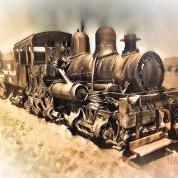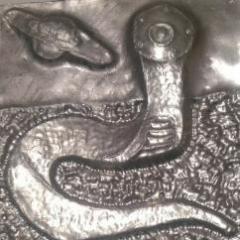
Mikey98118
Members-
Posts
6,946 -
Joined
-
Last visited
Profile Information
-
Location
Seattle, WA
Recent Profile Visitors
12,867 profile views
-
When we lose track, a good joke is always appropriate
-
As the practical choice, I must agree. However, I don't see many people, who aren't familiar with blacksmithing choosing it over a clean burning gas forge, these days
-
Okay, it does not begin to compare with a single burner Mister Volcano forge, which costs the same price; that is quite true. On the other hand, how much longer will the better forge continue to be offered? They have already taken their burners off the market. If we scoff at every other low cost forge, maybe there will be even fewer choices down the road? I look at that forge, and see how people who are reluctant till build their own forge can improve it, with little effort. Is it very small? Yes; on the other hand, people build coffee-can forges, and the even tinier two-brick forges, all the time, to build, repair, and change hand tools, and jewelry tools too.
-
My first burner designs used a series of holes in a line. The famous Hybrid burners, changed those series of hole to slots, improving burner performance. I came back with rectangular air openings, with beveled edges for and aft, improving them still further. However, simply cutting out the material between the back and forward hole in these burners, will turn them into air slots, which should improve burner performance more than enough for small burners. So, what has size got to do with anything? For some reason that I do not understand, smaller burner sizes tend to run hotter than larger burners; I have had to partially de-tune my smallest burners (1/4" size and under), in order to maintain long turn down ranges. This is the main reason that I am playing with linear burner designs again; they are more than hot enough to serve as miniature burners, and a whole lot easier for people to construct than Mikey burners. Don't worry, though; I've already designed souped-up linear burner versions, which are much harder to build, for the determined hobbyist. Never let it be said, that I let my fellow mad scientist types down
-
I would lose the brick, and add a 1/4" thick finish flame surface of Kast-O-lite 30, or Plistix 900, instead. This is a much better forge than the one I looked at; not because of its size, which is better because you will want to keep it, even after you build the "forge of your dreams." The best improvement over the other one, is that there is no angle around its exhaust openings to heat up, and be warped out of shape As to providing parts for other forges...if you simply scribe lines between the forward and aft holes on its burner, I think you will decide to keep your "garage heater" just as is People might use the e-cowlboy forge for a fancy door stop? Let's not forget to be helpful, at all times
-
dgr, I had a look, but did not find any e-cowlboy forge photos of their gas pipe and MIG tip. So, all I have to go on is my own previous experience; that tells me that copper pipe is quite unlikely to be used as a gas tube. A brass gas tube is far more likely. Old brass parts sometimes look like copper in photos. As to how they get a MIG tip with 1/4-27 thread to screw into a 1/4" outside diameter tube or pipe, the gas tube is probably 5/16" outside diameter by 3/16" inside diameter. Although, MK brand MIG tips have smaller diameter thread, which would probably just barely work in a 1/4" gas tube; hey are a superior tip, but I quite using them, because they are just too hard for people to find. By the way, their photos show a lemon yellow incandescent interior, which is consistent with 2000 to 2100 F heat range. 2700 F interiors are white hot. But the worst thing I see about these forges are the exhaust openings and doors. They look nearly guaranteed to warp from the heat of exhaust gasses. I could go on picking out things I don't like about this forge...but, enough said. "Last thing for Mike's new book. I've seen it mentioned in your writing that mufflers are zinc coated. I installed a few mufflers in my younger days and never saw the telltale yellow soot of zinc when welding them. I believe non-stainless modern exhaust components are aluminized and not zinc coated steel." Ups! Suppose I'm showing my age Thanks for the update.
-
Nice one, Lee. Tell us a little bit about the bird houses. I for one, am interested. We have a garden, a bird bath, loads of birds, and three trees to place them in; but no bird houses.
-
Good one, Trevor; I like that Yes, we just never seem to be satisfied...I have had some of the same problems. We must do a better job of coaxing?
-
I have noticed a recent uptick in activity on this thread, but fail to see a corresponding increase in questions. Your worries aren't state secrets, or even surprising to us. So you might as well fess up, and get some answers. We all promise to be kind; really we do
-
Frosty has it right. Two one inch layers crinkle far less than a single two inch layer. Once rigidized, both layers are glued back together again. So, you gain a lot of control, when installing the insulation, with no down side. What's not to love?
-
It must be added that what castable refractory you choose will effect the values mentioned above. Castable insulating refractory will work far better, with less fuel, than castable refractory used in glass furnaces, for instance. Also, heat reflective finish coatings are just as important as type of refractory used.
-
Relax, Scott. We are all still smiling
-
Tools only matter to me in what they can or can't help the artist to accomplish. By artist I include everyone from art student to would-be hobbyist, to craftsman. For the only differences between them are the decisions they make; beginning with "will I become this or that...or will I not even try." I understand about the tree; a heart attack and two strokes made a lot of changes in my own plans; worse luck, while I was coming back from all of that, I became a rickety old man. It's enough to make you grin at yourself
-
Frosty, So, do you have any thoughts about this tool? I think that if nothing else, its design is a good direction. On the down side, I don't think that I really understand their version of 220V motors and controls.
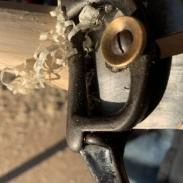

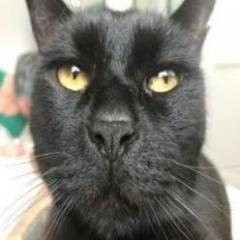

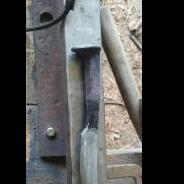
.thumb.jpg.bea91939c5b4fce764baedb2d3666792.jpg)
